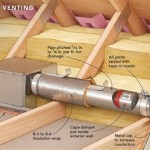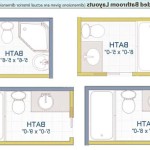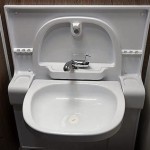Is Kitchen and Bathroom Paint the Same? Unveiling the Differences
When embarking on a home renovation project, selecting the appropriate paint can often be overlooked. While paint might seem like a simple decorative element, its formulation and properties significantly influence its performance and longevity, especially in rooms with specific environmental challenges. Two such rooms are the kitchen and the bathroom. Although both are interior spaces, the conditions they endure are distinct, raising the question: is kitchen and bathroom paint the same? The answer is complex and requires a careful examination of their respective demands.
The assumption that one type of paint suits all interior applications is a common misconception. Kitchens and bathrooms are subjected to higher levels of humidity, temperature fluctuations, and potential exposure to grease, food splatters, and cleaning agents than most other rooms in a house. Consequently, using the wrong type of paint can lead to premature peeling, blistering, mold growth, and a generally lackluster appearance. Selecting the correct paint for these areas is therefore crucial for maintaining their aesthetic appeal and structural integrity.
This article will delve into the nuances of kitchen and bathroom paint, highlighting the critical differences in their formulation, performance characteristics, and suitability for these demanding environments. Understanding these distinctions will empower homeowners and contractors to make informed decisions, ultimately ensuring a lasting and beautiful finish in both the kitchen and bathroom.
Key Point 1: Humidity Resistance and Moisture Management
The most significant differentiator between standard interior paint and specialized kitchen and bathroom paint lies in their ability to withstand high humidity levels. Bathrooms, by their very nature, are frequently exposed to steam and moisture from showers, baths, and sinks. Similarly, kitchens experience increased humidity from cooking activities like boiling water or using a dishwasher. This constant exposure to moisture can penetrate standard paint films, leading to bubbling, peeling, and the growth of mold and mildew.
Kitchen and bathroom paints are specifically formulated with a higher concentration of resins that create a tighter, less porous paint film. This barrier resists moisture penetration, preventing water from seeping into the underlying drywall or plaster. This enhanced resistance helps to maintain the paint's adhesion and prevent the unsightly and potentially damaging effects of moisture buildup. Furthermore, some kitchen and bathroom paints incorporate additives that further enhance their water resistance, providing an extra layer of protection against humidity-related problems.
The choice of paint sheen also plays a crucial role in moisture management. Sheen refers to the amount of light a paint reflects, ranging from matte (least reflective) to high-gloss (most reflective). Matte paints, while offering a soft and elegant appearance, tend to be more porous and therefore less resistant to moisture. Conversely, higher sheen paints, such as semi-gloss or gloss, create a smoother, less porous surface that is easier to clean and more resistant to moisture penetration. For kitchens and bathrooms, a semi-gloss or gloss finish is generally recommended to provide optimal protection against humidity and water damage.
Beyond the paint's inherent water resistance, proper ventilation is also essential in managing humidity levels in kitchens and bathrooms. Installing and using exhaust fans during showers, baths, and cooking activities can significantly reduce the amount of moisture in the air, thereby minimizing the stress on the paint film and extending its lifespan. Regular cleaning of surfaces to remove condensation and prevent the accumulation of moisture is also crucial for maintaining a healthy and aesthetically pleasing environment.
Key Point 2: Mold and Mildew Resistance
The damp and humid conditions prevalent in kitchens and bathrooms create an ideal breeding ground for mold and mildew. These microorganisms not only pose a health hazard but also can cause unsightly stains and damage to painted surfaces. Consequently, mold and mildew resistance is a critical characteristic of paints designed for these environments.
Kitchen and bathroom paints typically incorporate specialized additives, called biocides, that inhibit the growth of mold and mildew. These biocides work by disrupting the metabolic processes of these microorganisms, effectively preventing them from colonizing and thriving on the painted surface. The effectiveness of these biocides can vary depending on the formulation of the paint and the specific type of mold or mildew present. Therefore, it is essential to select a paint that is specifically labeled as mold and mildew resistant and that contains a sufficient concentration of biocides to provide adequate protection.
While mold and mildew resistant paints can significantly reduce the risk of microbial growth, they are not a substitute for proper cleaning and maintenance. Regularly cleaning surfaces with a mild detergent and water can help to remove dirt, grime, and any potential sources of food for mold and mildew. Addressing any sources of moisture, such as leaky pipes or inadequate ventilation, is also crucial for preventing mold and mildew growth. In situations where mold or mildew is already present, it is essential to thoroughly clean and disinfect the affected area before applying any new paint. Using a bleach solution or a commercially available mold and mildew remover can effectively kill the microorganisms and prepare the surface for painting.
Furthermore, proper surface preparation is crucial for maximizing the effectiveness of mold and mildew resistant paints. Removing any existing paint that is peeling or blistering and sanding smooth any rough surfaces will create a clean and uniform surface for the new paint to adhere to. Priming the surface with a mold and mildew resistant primer can also provide an additional layer of protection and improve the adhesion of the topcoat.
Key Point 3: Durability and Cleanability
Kitchens and bathrooms are high-traffic areas that are subjected to frequent use and exposure to various substances, including water, grease, food splatters, cleaning agents, and even physical abrasion. Therefore, durability and cleanability are essential characteristics of paints designed for these environments.
Kitchen and bathroom paints are formulated with a higher concentration of resins and binders that create a tougher, more durable paint film. This enhanced durability allows the paint to withstand repeated cleaning and scrubbing without showing signs of wear or damage. The paint film's resistance to abrasion also prevents scratching and scuffing, helping to maintain its appearance over time. The higher the quality of the paint, the more durable and cleanable it will generally be.
The cleanability of a paint is directly related to its sheen level. Higher sheen paints, such as semi-gloss or gloss, have a smoother, less porous surface that is easier to wipe clean. These paints are also more resistant to staining, making them ideal for areas that are prone to food splatters and spills. Matte paints, on the other hand, tend to be more porous and therefore more difficult to clean. Stains can easily penetrate the paint film, making them harder to remove. For kitchens and bathrooms, a semi-gloss or gloss finish is generally recommended to provide optimal cleanability and stain resistance.
When choosing a paint for the kitchen or bathroom, it is essential to consider the types of cleaning agents that will be used on the painted surfaces. Some cleaning agents can be harsh and abrasive, potentially damaging the paint film over time. It is recommended to use mild, non-abrasive cleaners to clean painted surfaces. Avoid using scouring pads or harsh chemicals that can scratch or dull the paint finish. Regular cleaning with a damp cloth or sponge can help to maintain the paint's appearance and prevent the buildup of dirt and grime.
In addition to the paint's inherent durability and cleanability, proper application techniques can also contribute to its longevity. Applying multiple thin coats of paint, rather than one thick coat, will create a stronger and more durable paint film. Allowing each coat of paint to dry completely before applying the next coat will also improve adhesion and prevent premature peeling or blistering.
In summary, while the term "paint" might seem generic, the specific formulations for kitchen and bathroom environments are significantly different from standard interior paints. Their enhanced resistance to humidity, mold, and mildew, coupled with their superior durability and cleanability, make them the ideal choice for these demanding spaces. Choosing the right paint will not only enhance the aesthetic appeal of your kitchen and bathroom but also protect your investment and ensure a lasting finish.

Kitchen And Bathroom Paint 8 Tips To Getting It Right

Kitchen And Bathroom Paint 8 Tips To Getting It Right

Kitchen And Bathroom Paint Pro

Leyland Kitchen Bathroom Paint 2 5l Brilliant White

Best Type Of Paint For Bathrooms 2024 Guide Forbes Home

Rona Kitchen And Bathroom Paint Velvet Finish 3 78 L Natural White

Trade Hqc Kitchen Bathroom Paint

Accent Kitchen Bathroom Low Sheen White

The Truth About Bathroom Paint Kitchen Bath Renovation

Best Paint For Kitchens And Bathrooms Checkatrade







